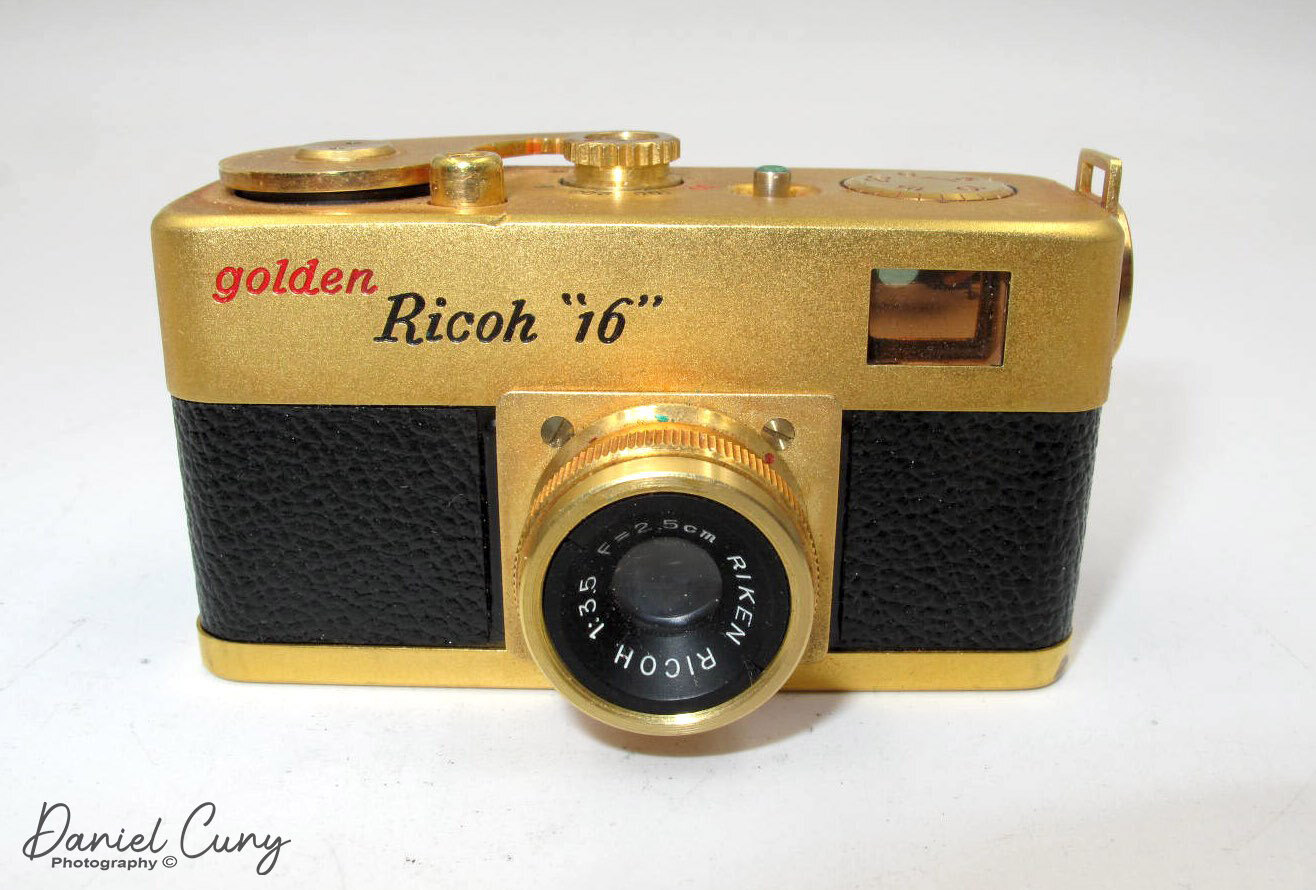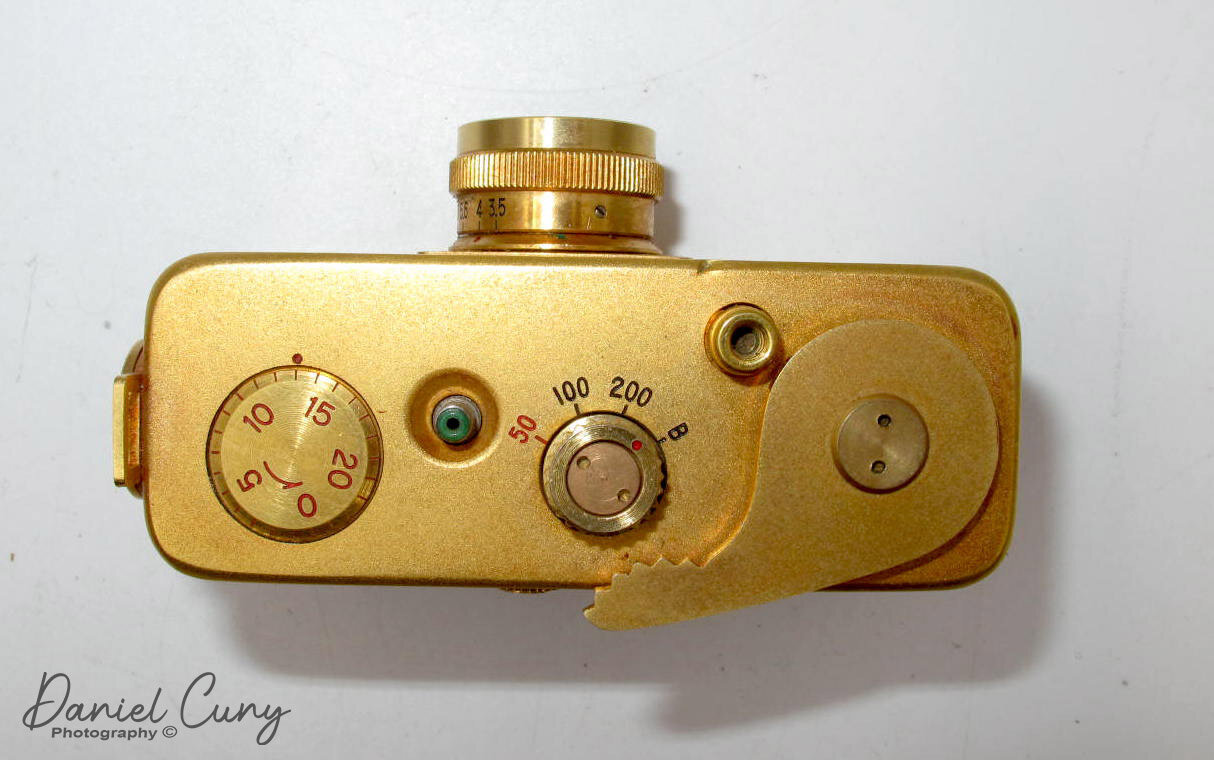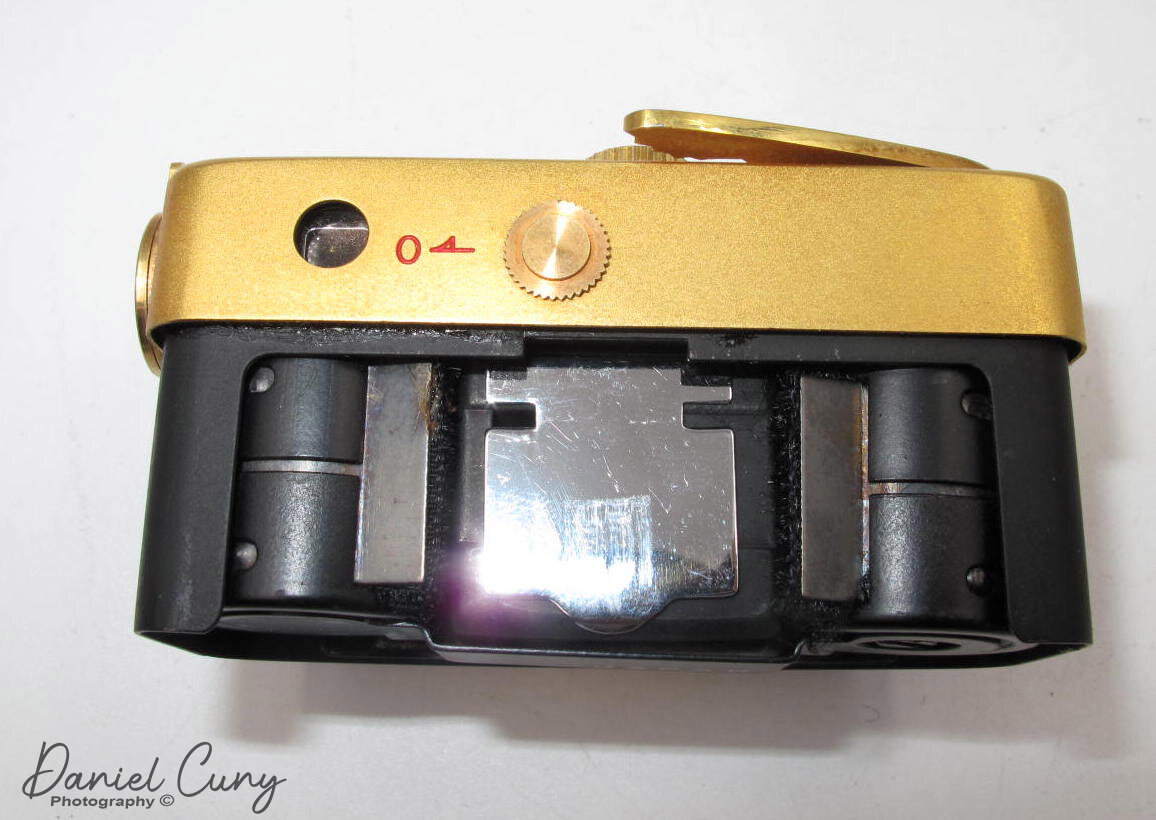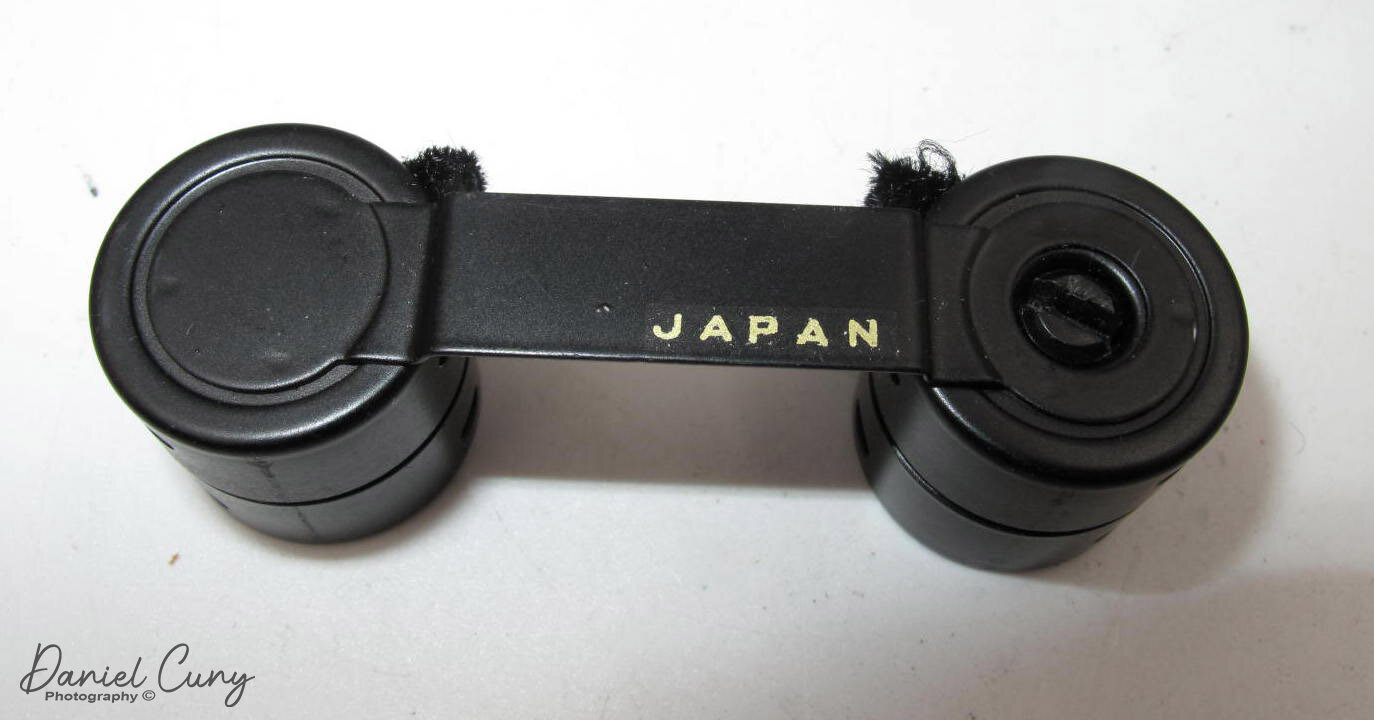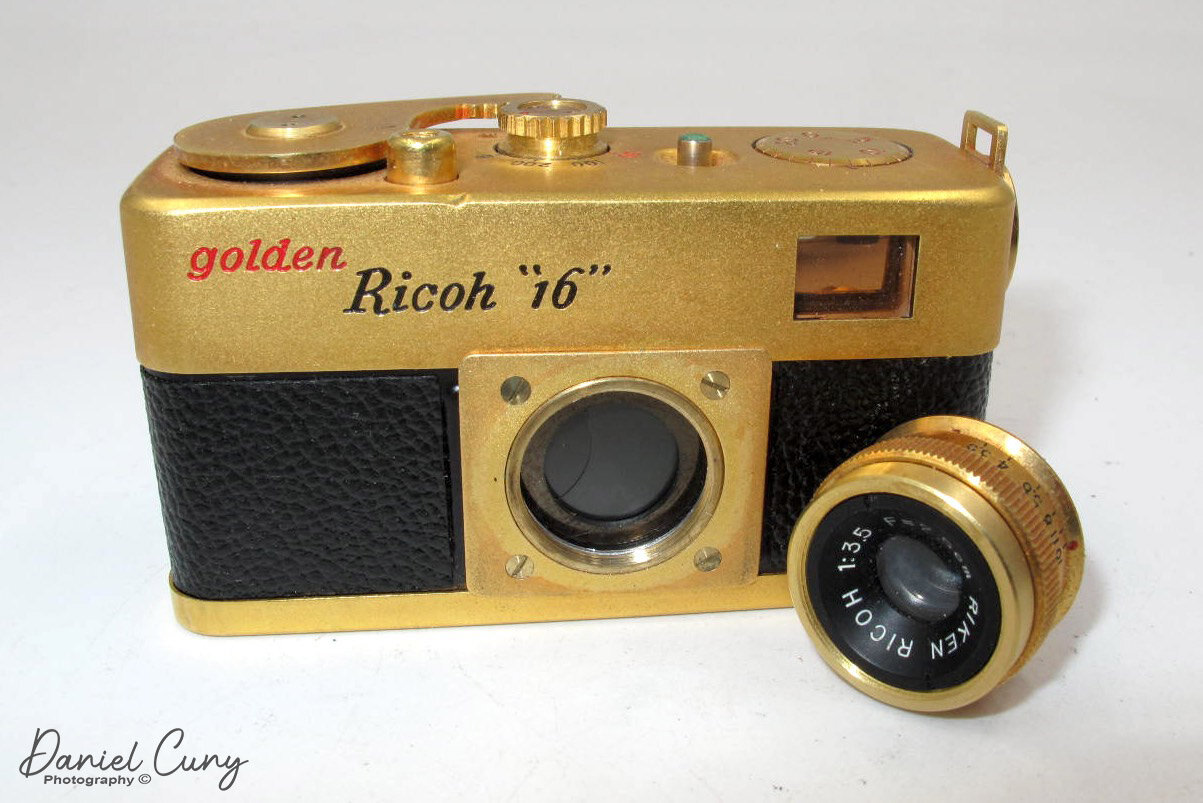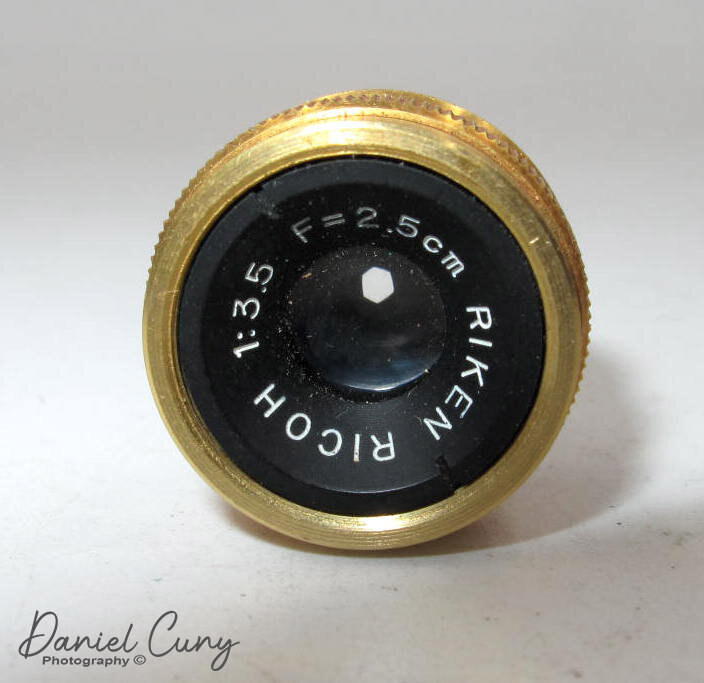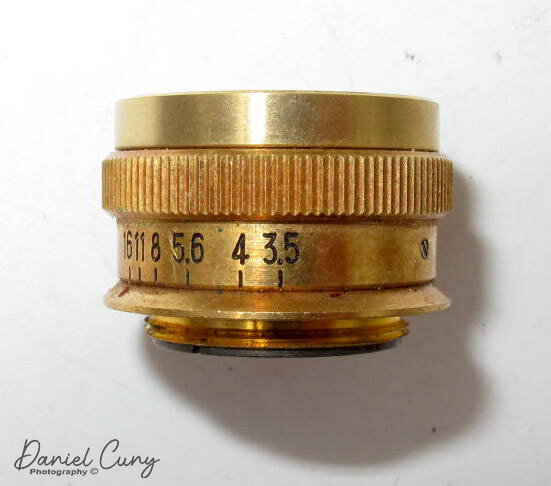Ricoh Golden “16” with case, reference manual, metal display case and original box.
"The most modern sub-miniature in the world!" That's what it says on the front of the reference manual, so I'm guessing that it's right in their eyes. Ricoh has a very long and fascinating history, and you can read more about it here.
The original Golden Stecky camera was released in 1957, but within a year, they changed the name to Golden Ricoh "16" camera. This is a pretty fantastic camera for such a small camera. The camera comes in at 8.3oz with the lens and case and is really a tiny horizontal format mirrorless camera. The camera and lens size is 3 "wide x 2.5" deep and 1.5" tall.
Camera in case and metal display case.
This is an actual gold camera as the gold was electroplated on the camera body with black leather surround the lens and onto the back. Attached to the body with a thread mount, is the Ricoh Riken 2.5cm (25mm) f3.5 lens. The lens has aperture settings from f3.5-16. The reference manual says the 25mm lens will be in focus from 3.5" to infinity. It also states, "your negatives can be to 20 "x24" without any appreciable grain in the enlargement".
In the reference manual, they state there is also a telephoto lens available, a 40mm f5.6 lens. The telephoto lens has aperture settings from f5.6-16. This makes sense as when you look in the optical viewfinder in the back of the camera, there is a cropped viewfinder line you can see for using the telephoto lens.
The camera allows the photographer to pick four different shutter settings from 1/200, 1/100, 1/50, and "B". These settings are at the top of the camera and are selected by turning a raised dial with a red dot to pick the desired speed. The 1/50 is in red. This dial is very close to the center of the camera, and just to the left as your holding the camera is the "PC" socket for flashbulbs, and to the left of the "PC" socket, is the film frame counter which goes from twenty to zero. You set the dial to zero when you load the film, and the counter turns to the next number when you advance the film. The film advances are on the far right on the top of the camera. The shutter release is between the film advance and the shutter speed selector and more towards the front of the camera like traditional cameras. The shutter release also has threads for a conventional cable release.
On the back of the camera is the optical viewfinder, which is in the upper left of the camera. To the right of the viewfinder is the back release button. In between the viewfinder and the back release button is an arrow showing the operator what direction slide the switch to release the back from the camera. The whole back of the camera slides down off the camera to expose where the film is loaded. Looking at the back of the camera, there is a pressure plate over the lens chamber to hold the film flat.
The camera has a 16mm film magazine, which allowed the photographer to either load their film. You could insert a factory loaded cartridge for more instantaneous photography. The camera case is a lovely brown leather case that screws into the side of the camera as opposed to the bottom as most cameras have. This is where you'd also screw the camera onto a tripod and mount the optional Ricoh B-300 flash unit. If you wanted to mount the camera and flash onto a tripod, you could install the flash bracket onto the tripod if needed.
If you have questions or comments, I'd love to hear from you.
Next week's camera will be one of my favorite cameras in my collection, the Kardon Camera.
You can subscribe to my Camera Collecting Blog below.


